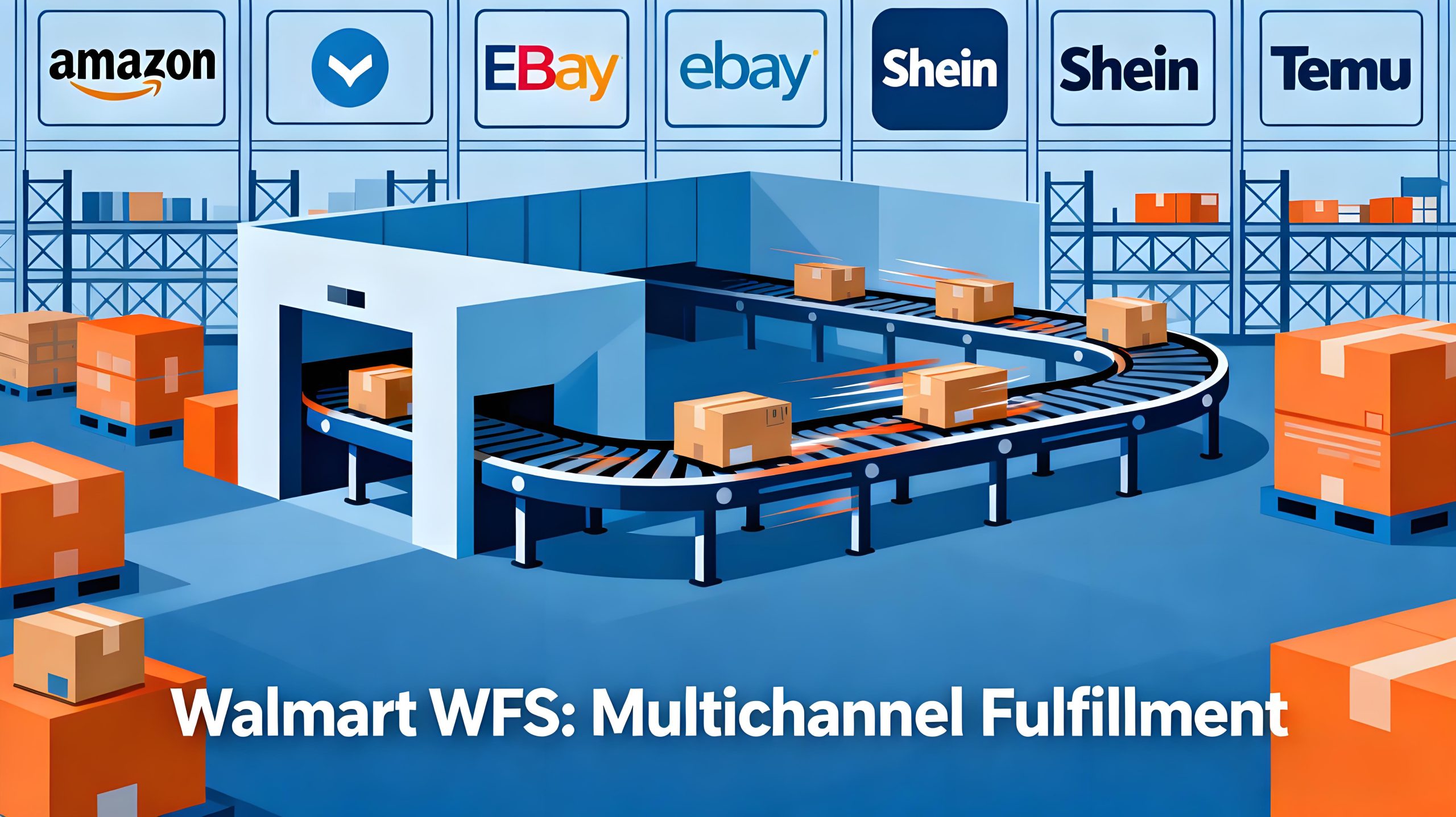Address
304 North Cardinal St.
Dorchester Center, MA 02124
Work Hours
Monday to Friday: 7AM - 7PM
Weekend: 10AM - 5PM

The e-commerce landscape is evolving rapidly, and U.S.-based Amazon sellers are constantly seeking ways to diversify revenue streams while maintaining efficient operations. Enter Walmart Fulfillment Services (WFS) and its Multichannel Solutions program—a game-changer for sellers looking to expand beyond Amazon’s ecosystem.
In 2024, Walmart launched its Multichannel Solutions initiative, allowing sellers to use WFS to fulfill orders from any e-commerce site, including Amazon, eBay, Shein, and Temu. This move has positioned Walmart as a strategic partner for sellers aiming to streamline logistics, reduce costs, and tap into new customer bases.
But why are Amazon sellers, in particular, flocking to WFS? Let’s explore the key benefits and how this integration can supercharge your e-commerce business.
According to Marketplace Pulse research, over 50% of Walmart sellers also sell on Amazon. This overlap highlights a critical trend: sellers are no longer confined to a single platform. Multichannel selling—listing products on multiple e-commerce sites—has become essential for growth.
However, managing inventory, shipping, and customer service across platforms can be daunting. That’s where Walmart’s Multichannel Solutions come into play. By integrating WFS, sellers can:
For Amazon sellers, this means maintaining Prime-like speed without relying solely on Amazon’s FBA (Fulfillment by Amazon).
Walmart’s WFS operates similarly to Amazon FBA but with added flexibility. Here’s how it works:
This seamless integration eliminates the need for separate inventory management systems. Plus, WFS offers competitive pricing, often undercutting Amazon’s FBA fees for certain product categories.
Another major draw for Amazon sellers is Walmart’s cross-border fulfillment service. Launched in 2024, this feature allows sellers to ship goods directly from Asian ports to WFS facilities in the U.S., bypassing the need for third-party logistics (3PL) providers.
Key benefits include:
For Amazon sellers sourcing products from China or other Asian markets, this service can cut fulfillment costs by up to 30% while improving delivery speeds.
While Amazon FBA remains a dominant force, WFS offers distinct advantages for multichannel sellers:
| Feature | Walmart WFS | Amazon FBA |
|---|---|---|
| Multichannel Support | Yes (fulfills orders from any site) | Limited to Amazon orders |
| Storage Fees | Competitive, often lower for large items | Higher for oversized products |
| Shipping Speed | 2-day delivery in most U.S. regions | Prime-eligible (but restricted to Amazon) |
| International Shipping | Cross-border fulfillment available | Requires separate FBA International |
For sellers looking to diversify, WFS provides a more flexible and cost-effective solution.
Several U.S.-based Amazon sellers have already reaped the benefits of WFS:
These cases demonstrate how WFS can empower sellers to scale beyond Amazon while maintaining operational efficiency.
Ready to explore Walmart’s Multichannel Solutions? Here’s how to begin:
Walmart also offers onboarding support for sellers new to its platform.
Ready to streamline your multichannel fulfillment and expand your e-commerce reach? Contact our team today to learn how Walmart’s WFS and Multichannel Solutions can boost your sales while reducing costs. Whether you’re an established Amazon seller or just starting out, we’ll help you navigate the transition seamlessly.
A: Yes! Walmart’s Multichannel Solutions allow you to fulfill orders from any platform, including your branded website.
A: Simply ship your inventory from Asian ports to designated WFS facilities in the U.S. Walmart handles customs clearance and transportation.
A: Often, yes. WFS offers competitive storage fees, especially for oversized products, making it a better choice for certain categories.